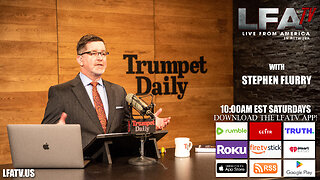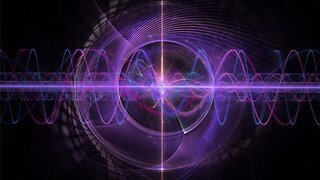#LIGO researchers at @MIT, @Caltech, and other #institutions have reported a significant advance in
#LIGO researchers at @MIT, @Caltech, and other #institutions have reported a significant advance in #quantumsqueezing, allowing them to measure #undulations in #spacetime across the entire range of gravitational frequencies detected by LIGO. This new "frequency-dependent squeezing" technology, in operation since its restart in May 2023, allows LIGO to probe a larger volume of the universe and are expected to detect about 60% more mergers than before. This greatly boosts LIGO's ability to study exotic events that shake space and time.
The new #LIGO #technology, which originally involved research experiments at MIT led by Matt Evans and Nergis Mavalvala, has allowed for more #astronomy and a greater understanding of the universe. The project requires multiple people, from facilities to engineering and optics, with important contributions from the LIGO #Scientific #Collaboration. The #pandemic made the effort even more challenging.
The results have #implications for future #quantum #technologies such as quantum #computers and other #microelectronics as well as fundamental #physics #experiments. The researchers can apply what they have learned from LIGO to problems that require measuring subatomic-scale distances with incredible accuracy.
The National #Science #Foundation (#NSF) is proud to have invested in building the twin LIGO detectors in the late 1990s, as they made possible #groundbreaking #discoveries and unleashed the design and development of #novel #technologies. Through decades of continuing investments and expansion of #international #partnerships, #LIGO is further poised to advance rich discoveries and technological progress.
In summary, LIGO researchers have achieved a significant advance in quantum squeezing, enabling them to measure undulations in space-time across the entire range of gravitational frequencies detected by LIGO. This advancement in technology will allow LIGO to study exotic events that shake space and time more effectively.
Quantum physics laws dictate that particles, including photons, will randomly pop in and out of empty space, creating a background hiss of quantum noise that brings uncertainty to LIGO's laser-based measurements. Quantum squeezing, which has roots in the late 1970s, is a method for hushing quantum noise, pushing the noise from one place to another with the goal of making more precise measurements.
Light can be manipulated like a #balloon #animal, making it more precise in one trait, such as its frequency, but becoming more uncertain in another trait, such as its power. This limitation is based on the #uncertaintyprinciple, which states that you cannot know both the position and momentum of objects (or the frequency and power of light) at the same time. Since 2019, LIGO's twin detectors have been squeezing light to improve their sensitivity to the upper frequency range of #gravitationalwaves they detect. However, by making LIGO's measurements more precise at high frequencies, the #measurements became less precise at lower frequencies.
#LIGO's new frequency-dependent optical cavities allow the team to squeeze light in different ways depending on the frequency of #gravitational #waves of interest, thereby reducing noise across the whole LIGO frequency range. The uncertainty in the #quantum #realm is similar to a can of #BBs, where light photons hit LIGO's mirrors at irregular times.
The squeezing technologies since 2019 make the photons arrive more regularly, as if the photons are holding hands rather than traveling independently. The idea is to make the frequency, or timing, of the light more certain and the #amplitude, or power, less certain as a way to tamp down the BB-like effects of the photons. This is accomplished with the help of specialized crystals that turn one photon into a pair of two entangled (connected) photons with lower energy. The crystals don't directly squeeze light in LIGO's laser beams; rather, they squeeze stray light in the vacuum of the LIGO tubes, which interacts with the laser beams to indirectly squeeze the laser light.
The concept of squeezing #light dates back to the late 1970s, with theoretical studies by Vladimir Braginsky, Kip Thorne, and Carlton Caves. This work inspired one of the first experimental demonstrations of squeezing in 1986 by H. Jeff Kimble, the William L. Valentine Professor of #Physics, Emeritus at Caltech. In 2002, #researchers began thinking about how to squeeze light in #LIGO detectors, and in 2008, the first experimental demonstration of the technique was achieved at the 40-meter test facility at #Caltech. In 2010, #MIT researchers developed a preliminary design for a LIGO squeezer, which they tested at LIGO's Hanford site. Parallel work done at the GEO600 detector in Germany also convinced researchers that squeezing would work.
-
 LIVE
LIVE
The Anthony Rogers Show
8 hours agoEpisode 312 - Steve Farrell
571 watching -
 LIVE
LIVE
LFA TV
15 hours agoDemocrats’ Unhinged 2024 Campaign Plan: ‘Get Trump’ by Whatever Means Possible| Trumpet Daily 5.16.24 9pm EST
785 watching -
 1:56:35
1:56:35
Donald Trump Jr.
8 hours agoThe Swamp Runs Deep but Thankfully Senator JD Vance is Standing in Their Way | TRIGGERED Ep.137
81.3K151 -
 1:11:20
1:11:20
The Late Kick with Josh Pate
2 hours agoLate Kick Live Ep 513: ACC Implosion Ahead | SEC QB Ratings | Dabo vs The Portal | Big Ten Snapshot
2.76K -
 2:03:15
2:03:15
The Quartering
5 hours agoCrowder Exposes Woke Military, 2 Video Games DEI Insanity Leak, Religious NFL Player Cancelled
40.8K36 -
 2:25:40
2:25:40
ThatStarWarsGirl
4 hours agoTSWG LIVE: Unboxing P.O. Box Presents!
14.8K4 -
 1:04:13
1:04:13
Kimberly Guilfoyle
10 hours agoTelling Stories of Faith Through Film: Exclusive Interview with Iconic Actor & Producer Eduardo Verástegui | Ep. 126
44.6K56 -
 2:10:58
2:10:58
Quite Frankly
10 hours ago"WHO Treaty, Direct Care, Sound Resonance Healing" ft J Gulinello 5/16/24
15.2K2 -
 5:01:09
5:01:09
MDGgamin
8 hours ago🔴LIVE- Grayzone Warfare -Taking the Fort & Going to Ground Zero -#RumbleTakeover
37.1K4 -
 1:10:58
1:10:58
Battleground with Sean Parnell
6 hours agoDoes Our Government Ever Tell the Truth Anymore?
32.3K59